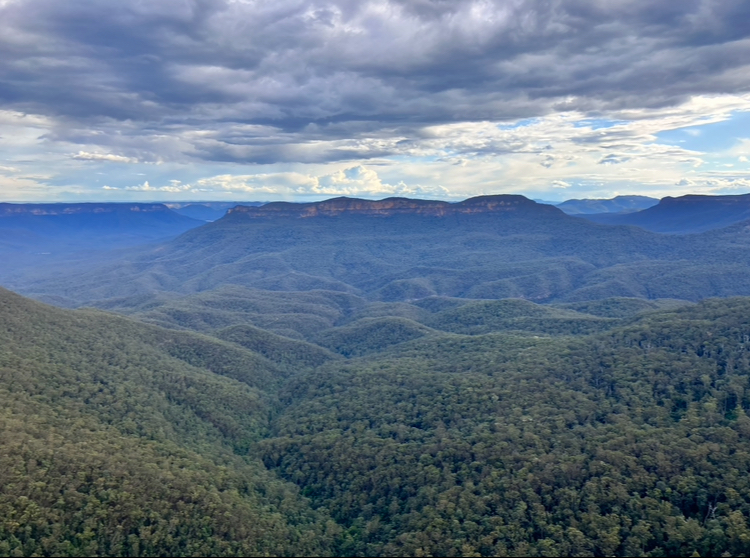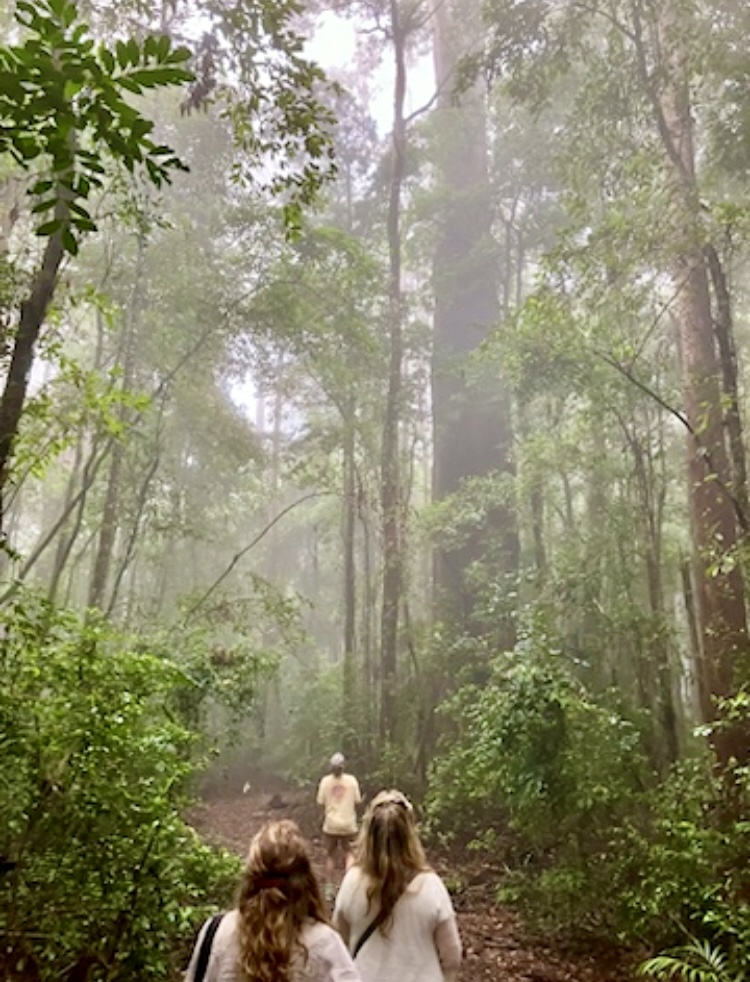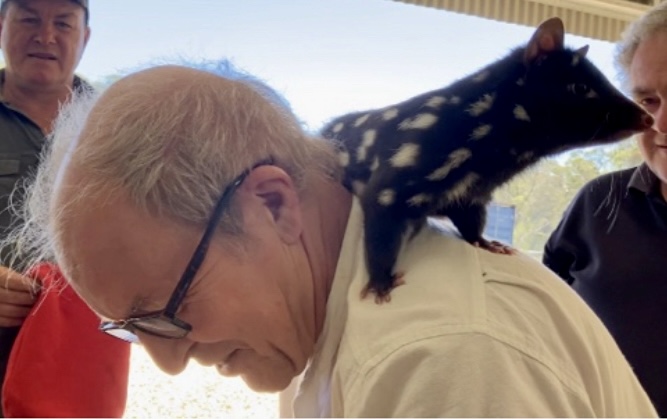550 million years, and counting…. Theo’s blog
On a drive through Gosford, New South Wales, towards the end of our stay, I noticed I was no longer noticing Australia.
I’d gotten used to the utes and double-trailered trucks driving at sober speeds past bungalows and verandahs and retail parks where well-fed sunscreened people in shorts and base-ball caps moved purposefully from one air-conned space to another, against a backdrop of deep green bush and glimpses of lake or creek or sea, unspeakably inviting in the baking glare. And most of all, I’d briefly forgotten the sensation, 3 months earlier, of being “down under” the globe where we’d first stopped in awe to touch the ocean on a South Australian beach looking out towards Antarctica.
It took our journey away from the now much-extended family and new friends we’d made on Australia’s southwest edge, back through the parched expanse of the continent’s centre, to reconnect me to the ancient otherness of it all. That’s what I’d felt when we first touched down on the coast of the Northern Territory. Like – but not like – the world I knew, strolling out from our hostel in Darwin into brooding tropical heat, beneath a massive psychedelic sunset. Gigantic bats emerging to flap slowly from tree to tree through streets that felt like flimsy painted scenery imposed on an ancient land.
Obviously, all land is “ancient”. But I can’t pretend I didn’t sense it more deeply in the old (very old) growth forest, the massive not-so barren desert, the folds of the mountains, marsupial faces and the strange yowling voices of the birds, or the metre long monitor lizards leading our way on my first guided walk through the bush, a presence of the past that comes from being a world to itself for millions of years, like the unbroken pulsing of a didgeridoo, it’s creatures and plants and even its people evolving and existing in unique synergy.
After initial waves of alienation, arriving as we did from the simplicity of Timor and the stillness of Central Australia into a vast Melbourne shopping mall vomiting incongruous Christmas soon-to-be landfill products into branded shopping bags to the musical accompaniment of songs about snow, I came to enjoy the relaxed, no-nonsense life of civilised Australia, not least because life without air-con and fridges would have been unbearable. But whenever we stepped from the ‘burb to the bush, counting wallabies in the mist of Barrington Tops, encountering Echidna on a Blue Mountain ledge, tracing the roots of fossilised trees on the Newcastle sea shore where pelicans stalk the anglers for scraps, the sheer size and extremity of country seemed to dwarf the ultramodern world that clings to its edges. Even the word “Australia” itself feels like just a temporary name tag.
The awful reality is of course that humans more than have the capacity to fell all the gum trees, clear the forests, wipe out the indigenous species, scrape away the mountains and poison the waters in one generation. Efforts have certainly been underway in that direction for a few hundred years. It was still woefully apparent in the present, the battles against old-growth logging, strip-mining and water pollution being the subject of vigorous campaigns that gave me and Shannon plenty of opportunity to perform at fund-raising gigs.
But apparent too were ongoing efforts, voluntary and organised, to restore the native bush and to control or eradicate invasive species – in other words the non-native creatures intentionally let lose in the past by the most invasive, and sometimes idiotic, species of all – like the rabbits brought over from the village of Baltonsborough 7 miles from our Somerset home, or the cane toad, the Asian wasp, the Scottish broom, the English fox, and many, many more.
I have to say though that in a country where vegetarians at a road stop food counter can feel like they’ve stepped back in time to 70s Britain, no one’s trying to eradicate the invasive cattle or sheep. They compete with Kangaroos for the grazing that hard working farmers believe is rightfully theirs, and the beautiful tribes of wild Roos, so graceful, strange and powerful to our eyes, become a pest to be culled either legally or illegally. Hopefully though, the livestock tragedy that was unfolding while we were there of thousands of living animals stranded in hellish heat and filth on a ship to Arabia, has pricked the national conscience enough that at least the scourge of live animal exports will soon be banned.
Paradoxically, the drive to consume and lay waste to the natural environment for economic growth co-exists in Oz with a level of awareness and nature-appreciation that’s humbling to me as a Briton. We saw again and again how Australian friends and family had knowledge and respect for the bush. Unless you’re in the cities you can’t ignore it. Nature is wild and present from childhood, just beyond the backyard fence. The imminent threats of fire, flood and extreme heat shape daily life. There are things in the undergrowth and things in the water that can do you a serious injury. But as my friend Kev, who cycled here with Aussie partner Lowanna 25 years ago and now lives happily embedded in the community of Bellingen put it to me, the nature here presents as spiky and dangerous, but when you get to know it, it’s fragile and soft.
-Like nature everywhere in other words: vulnerable, super-sensitive and tender, dependent on a million interconnections with those around it, existing in a continuum with rock and water and sky that combines to weave an awesome majestic world.
I gave thanks for having the opportunity to give thanks, when I found myself at the bottom of Uluru (Ayers Rock) near the centre of the continent, on our way back to Darwin and our departure for Timor Leste. Unable to walk with Shannon and Rosa because of an injured knee, I stopped by a fenced-off cave nestled in a well-watered fold between red rock and arid desert, a haven of green life and plopping frogs. In pre-dawn dark I sat on a metal railing with my head resting back against the ancient mountain – rock formed 550 million years ago.
The beautiful birds that slept there slowly warbled, rustled and whistled into life as they’ve done since aboriginal youth were gathered in that cave to be taught ways of hunting and foraging in an apparently inhospitable landscape, with images from their lessons still visible etched into the walls. I imagined the roots of that mountain I leant on reaching out to support the whole continent, and beyond that, the common foundation of all the earth we travelled, over the equator and back again.
I had to give thanks to that country for the privilege of visiting and meeting so much of it. I was sad that I’d made no connection with the First Nation peoples there, only brushed against their world to glimpse hopeless patterns of deprivation and loss around desert truck stops, or by contrast, the hopefulness and dignity of indigenous leadership among those defending traditional lands and nature.
In the end, belonging is just a matter of time and connection. The Aboriginal people came overland like we did, they just travelled a lot slower. And they lived here long enough and in such a way that they became part of the ecology, not outsiders to it. The ancestors of modern Australians came under duress, as exiled machine breakers and trade unionists, deported poor and slave labour, or later as hopeful “economic migrants” and settlers. They smashed and dislocated the aboriginal line. Yet within a generation or two their children also belong to this place, even if their culture and way of life is still at odds with it.
The nearest I came to the native wisdom here was through spending time with our old friend John Seed. He’s been saving forests and hosting “deep ecology” training for many decades, around the planet and at home in Australia. Since I last saw him he’s ripened into a right old Wizard of Oz. He left me and Shannon with deep things to ponder at the end of our yellow brick road, not least the benefit of simple appreciation and thankfulness.
Like me, John has an open mind about whether or not our species has a future on this planet, and a philosophical attitude to either outcome. But his eyes lit up when he told me the joy he takes from hearing modern Australians talk about feeling a native-born connection with the land.
We agreed that wherever you live, for so long as your life continues, allowing yourself to feel and be the animal you are, noticing and strengthening your total connection with nature, not only increases the chances of human survival but also increases the simple joy in our lives. That thought solidified for me at Uluru, and I hope it will stay embedded and grow for me long after the immaculate dawn choruses of rosella, galah, magpie, cockatoo and kookaburra fade, as they inevitably shall, from memory.
- Theo, March 2024





Baltonsborough rabbits! That is mental! Next time I see the rabbits here I will be wondering what their genetic connection to Australia is.
What’s the creature on your back? Lovely words
Thank you for your thoughts Theo. Feeling blessed to walk beside you on your epic journey across this complex beautiful planet..
It’s lovely to hear your voice Theo. I’m so glad you got to Uluru on your way back across Australia. Xxx